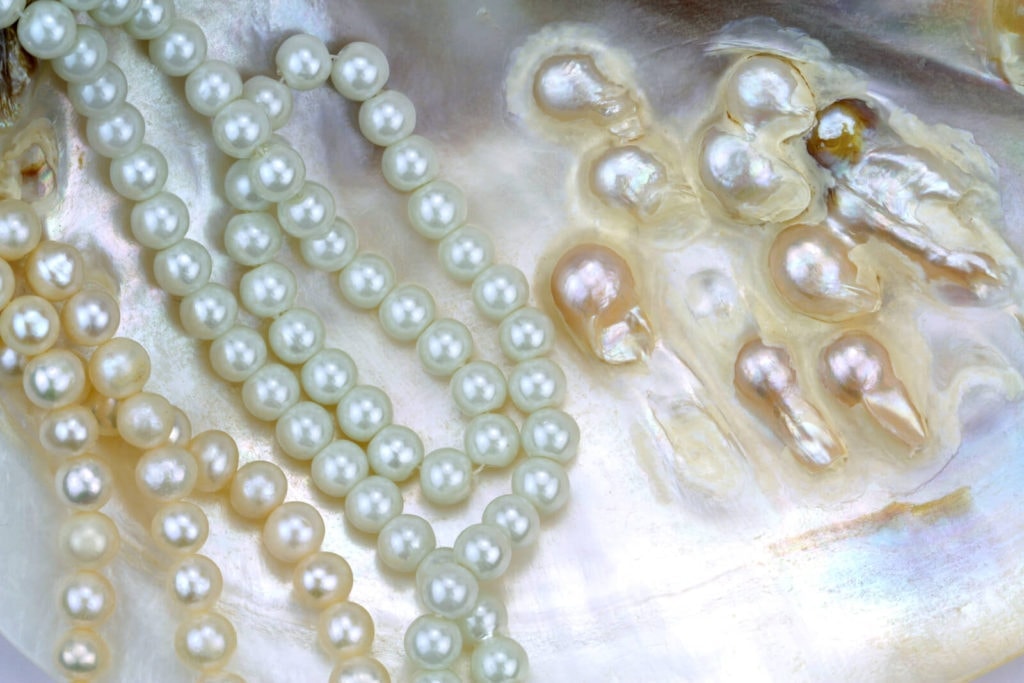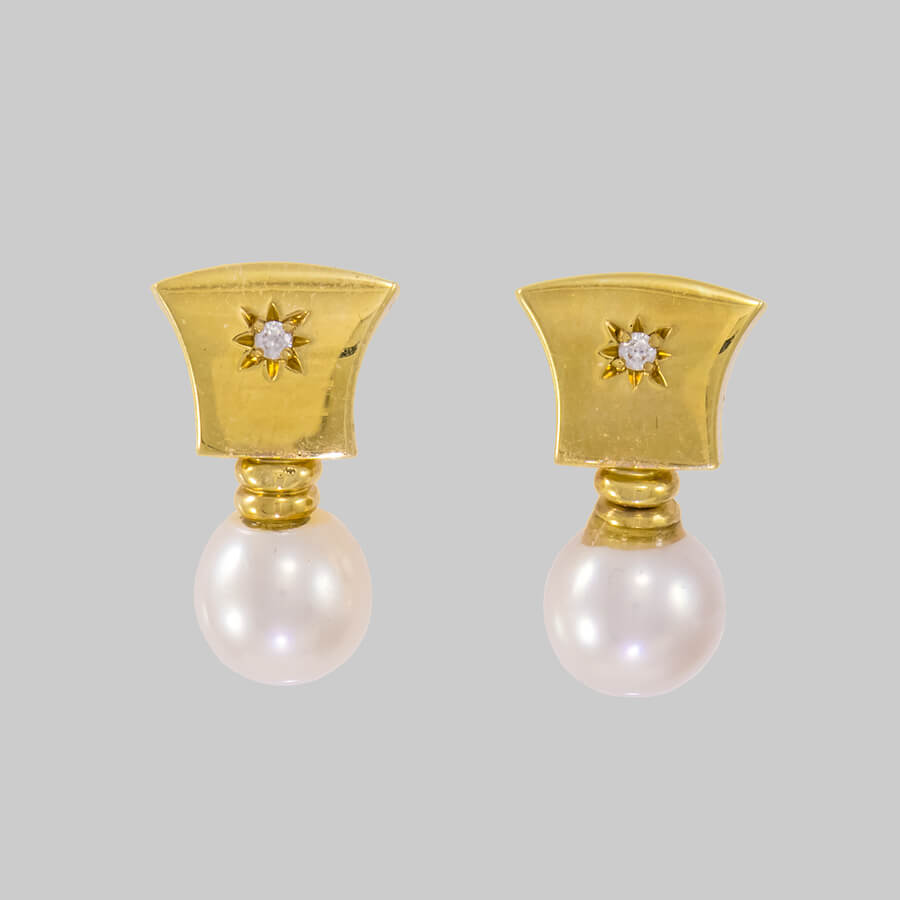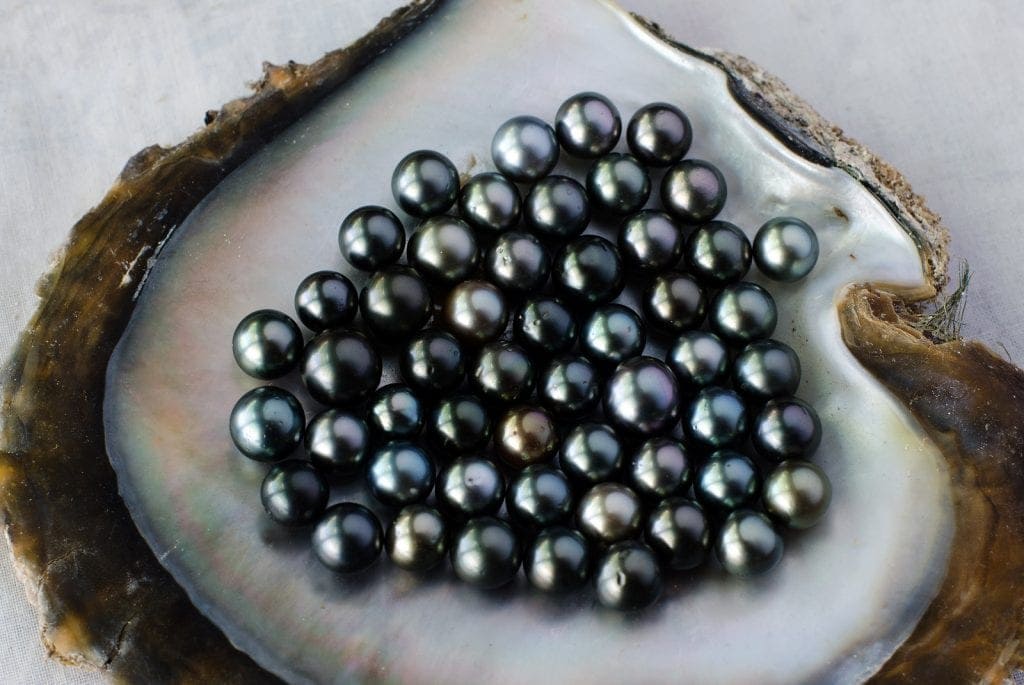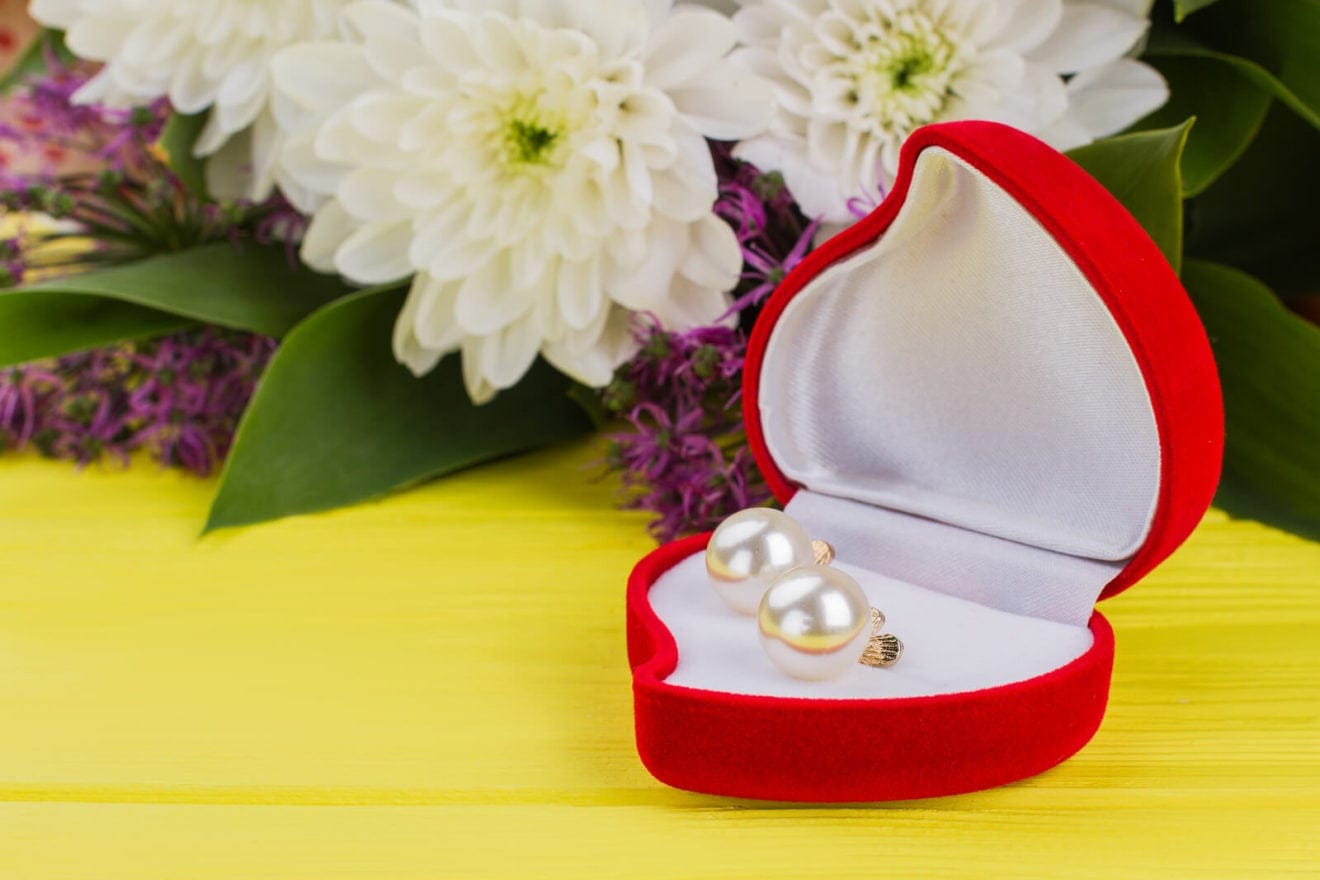There’s no simple answer to the question ‘How much are pearls worth’ and yet it’s one of the questions we get asked on a regular basis.
The short answer is – it varies. Pearls can cost as little as $1 and go up in price to well over $100,000. Before we get into the details, here are the main takeaways from this article.
- Wild and natural pearls are typically more expensive than cultured pearls.
- The value of pearls depends on several factors which impact the grading of pearls (this includes size, color, shape, luster, surface quality and type).
- Pearl variety has a direct bearing on the worth of pearls with South Sea pearls being the most expensive, followed by Tahitian, Akoya and freshwater pearls.
- The most expensive pearl in the world is also the largest, valued at 100 million dollars.
Factors That Impact Pearl Pricing
When considering the value of your pearls, here are the main factors to take note of:
1- Pearl Origin
Natural/wild pearls refer to pearls formed in the wild, without human intervention. Typically, divers have to go looking for these in the sea, which can be difficult, costly and laborious. Wild pearls are so rare now that it’s almost impossible to find them in retail settings. Most wild pearls are sought after by collectors. Because of their rarity, wild pearls are often more expensive than cultured.
Cultured pearls are real pearls – don’t worry, they’re not fake. They just happened to have had a little human help to get them started. Cultured pearls are harvested in pearl farms and are abundant and affordable (depending on type). Virtually all pearls on the market are cultured.
Takeaway: Natural/wild pearls are more expensive than cultured.
2- Pearl Value Factors

Pearl Size – Pearls vary in size from 1mm to 20mm or more. The larger pearls are valued higher than small pearls because they take longer to grow and are more expensive to produce. This is one reason for South Sea pearls’ high price as they are the largest type of pearls.
Pearl Shape – Perfectly round pearls are rarer than baroque or off-round pearls and also have higher demand. They’re typically more expensive than baroque pearls.
Pearl Color – Pearls come in a variety of colors, although white is the traditional and most sought after pearl hue. However, black, gold and blue pearls are very valuable due to their rarity.
Pearl Surface Quality – Perfect pearls cost more than blemished or flawed pearls. The most valuable pearls have no visible flaws on their surface.
Pearl Luster – Possibly the most important value factor, luster is typically what makes a great pearl stand apart from an average one. It’s also what gives pearls their ‘pearly sheen’ and reflection that is so loved.
Takeaway: Large, round pearls with no surface flaws typically cost more than imperfect pearls.
3- Pearl Types

South Sea Pearls – These large pearls are the most valuable of all pearl types. They’re not called the Rolls Royce of pearls for nothing.
They average 10mm to 13mm in size and can grow up to 20mm. Most White South Sea pearls come from Australia, while the Golden South Sea pearl is primarily farmed in the Philippines. Some other sources are Indonesia and Myanmar. Both white and gold varieties are priced around the same mark.
Expect to pay between $100 to about $5000 for a single pearl (depending on quality) and around $1000 to over $100,000 for a strand of South Sea pearls.
Tahitian Pearls – These (and the Sea of Cortez pearls) are the only naturally occurring dark pearls on the market. They have a dark body tone and a range of overtones that vary from peacock to steel-silver.
Tahitian pearls average 8mm to 13mm in size and are somewhat smaller than South Sea pearls. They are farmed under stringent conditions around French Polynesia with Tahiti being the hub of the industry.
Loose Tahitian pearls vary in price from around $50 to approximately $1500. A strand of these pearls can cost between $500 to upwards of $20,000 depending on the value factors.
Akoya Pearls – The classic, round white pearls that are highly sought after, Akoya pearls are the most popular pearl variety. They’re highly reflective and have gorgeous luster. Akoya pearls are typically round and small averaging 6mm to 8mm in size. These pearls strike the perfect balance between quality, sophistication and value.
An Akoya strand will cost around $300 to $10,000.
Freshwater Pearls – These offer the best value of all pearls. freshwater pearls are sourced from freshwater pearl farms and are the least expensive to grow.
In the beginning, cultured freshwater pearl quality was inferior to Akoya pearls but today they’re nearly identical thanks to better technology and innovation in freshwater pearl cultivation. Check out Edison pearls, which are a testament to this progress.
Freshwater pearls come in a variety of shapes, sizes and prices. A freshwater strand roughly costs between $100 to $2000.
Takeaway: Freshwater pearls are the best value if you’re on a budget, but South Sea and Tahitian may be better investments.
Other Factors That Impact Pearl Jewelry Price

The type of jewelry setting can also significantly impact on the overall price.
- Metals: Precious metals like gold and platinum
- Gemstones: Other gemstones like diamonds, rubies or sapphires
- Style: Some pearl jewelry styles cost more than others. For example, an entire strand of South Sea pearls will cost significantly more than a stunning pearl pendant.
- Brands: Designer pearl jewelry and big brand names will always add a premium to the price of the jewelry piece. Oftentimes, the pearl quality is the same, but the price would be much higher.
If you’re looking for quality pearl jewelry on a budget, it’s best to skip the big names and opt for smaller pearl specialists. You’ll be able to develop a closer relationship with the seller and ensure your pearls are authentic and of good quality.
Most pearl specialist stores have very generous returns policies, sometimes up to 3 months. This is a good sign as it shows that the vendor is prepared to stand by their product and take it back if it isn’t to your satisfaction.
Takeaway: Brands and jewelry setting quality significantly add to pearl jewelry price.
Should I Invest in Pearls?

And finally, the big question – are pearls a good investment? When buying jewelry (or any expensive product) we like to think that the item gains in value instead of losing value over time.
Experts typically recommend avoiding jewelry for investment, but sometimes it can be a good choice. If you invest in high-quality pearl jewelry, they’ll last for decades and can turn into heirlooms that can be handed down to the next generation.
Not all pearl jewelry retains or grows in value. But rare or unique types of pearls can grow in worth and sell for more than you bought it for. Case in point are the many examples of vintage pearl jewelry that sell at high prices even today.
In any case, it’s best to buy your pearls for the love of pearls rather than for investment. At least you’ll enjoy them while you have them.
Takeaway: Pearls can retain their value but may not be the best way to invest your money.
How to Buy Pearl Jewelry at the Right Price Point
It’s not necessary to spend huge amounts of money to enjoy pearl jewelry. Unlike in the past, when only the rich upper classes could afford pearls, today they’re much more accessible to all.
A great way to start your search for the best pearls for you is to consider your budget. Because pearls range in price, knowing what you’re comfortable spending will help you pinpoint the pearl type and value factors that sit within your budget.
For example, if you’re only willing to spend around $500 for a strand of pearls, you could opt for a 18-inch princess length Akoya pearl strand like this one.
Takeaway: Set your budget before you buy pearl jewelry.
The Most Expensive Pearl in the World
The most expensive pearl ever sold at auction is the La Peregrina, or the Wanderer, which once belonged to famed actress Elizabeth Taylor. The necklace sold for over 11 million USD in 2011 making it the most expensive pearl.
However, the most expensive pearl today is the unnamed giant clam pearl that was found off the coast of an island in the Philippines. Valued at a 100 million dollars, this 75-pound, 26-inch long pearl is by far the largest pearl we know of.
Takeaway: The most expensive pearl is valued at $100 million.


